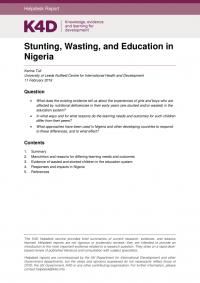Africa/ Nigeria/ 02.08.2019/ Source: saharareporters.com.
Adamu Adamu, a former education minister, has said the number of out-of-school children in the country now stands at over 16 million.
Adamu, who is also one of the 43 ministerial nominees submitted to the senate for screening and confirmation stated this while fielding questions from senatirs on Wednesday.
The Nation reports that the new figure of 16 million, however, contradicts the 13 million out-of-school children being bandied around.
The ministerial nominee told the senate that the 16 million figure was based on a February 2019 census.
Adamu noted that out-of-primary-school children stood at 10 million, while children out-of-secondary-school are six million.
He blamed the high number on poor funding of education in the country by states and the federal government.
Adamu also said it appeared that more Nigerians are now corrupt despite President Muhammadu Buhari’s anti-corruption campaign.
Senate President, Ahmad Lawan, said the legislature and the executive arm of government should work together to get the children back to the classrooms.
Lawan said: “It is our responsibility to get these children out of (the streets). The senate and the executive need to work together to get these children back to the classroom.
“We can’t continue to have them on our streets. It poses a serious security problem and we need to stop it. Maybe that will be through more budgetary allocations.”
Source of the notice: http://saharareporters.com/2019/07/25/16-million-children-out-school-nigeria-adamu-former-education-minister









 Users Today : 7
Users Today : 7 Total Users : 35460216
Total Users : 35460216 Views Today : 10
Views Today : 10 Total views : 3418905
Total views : 3418905